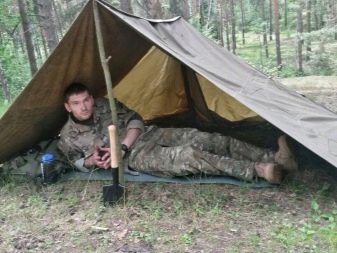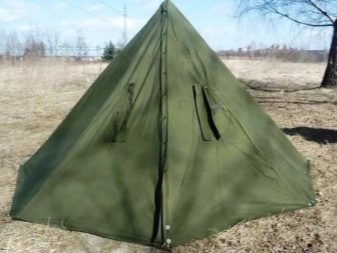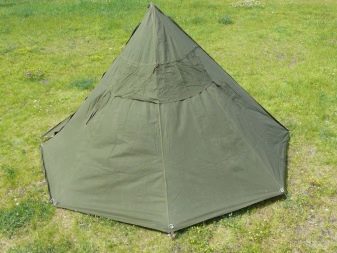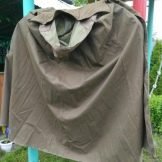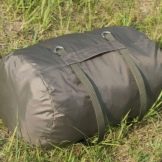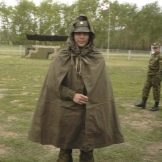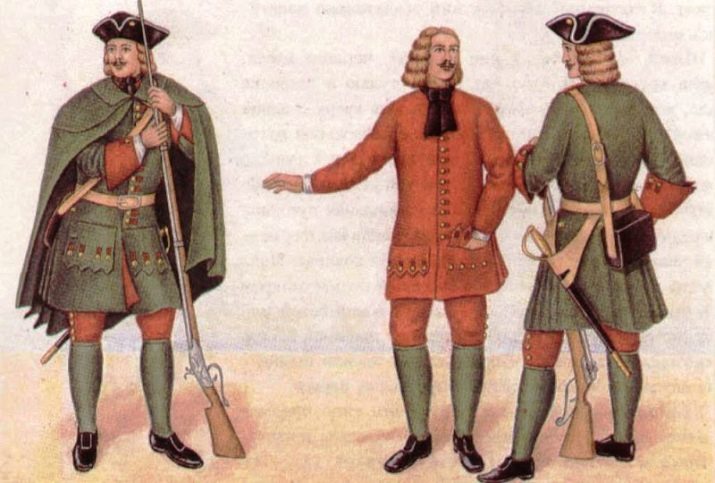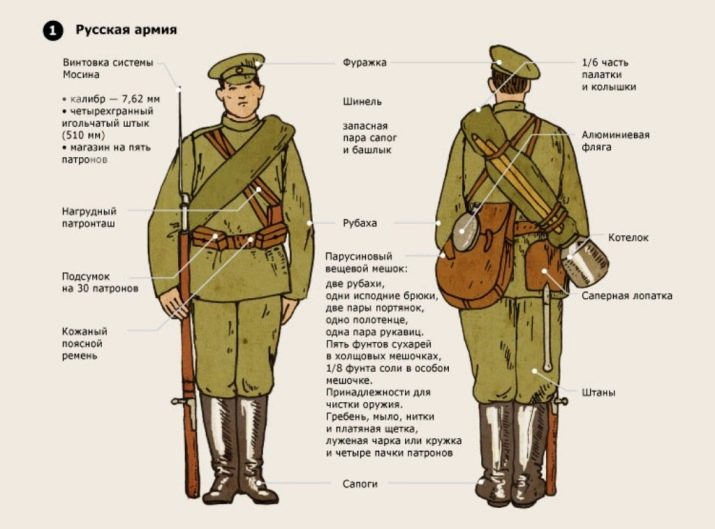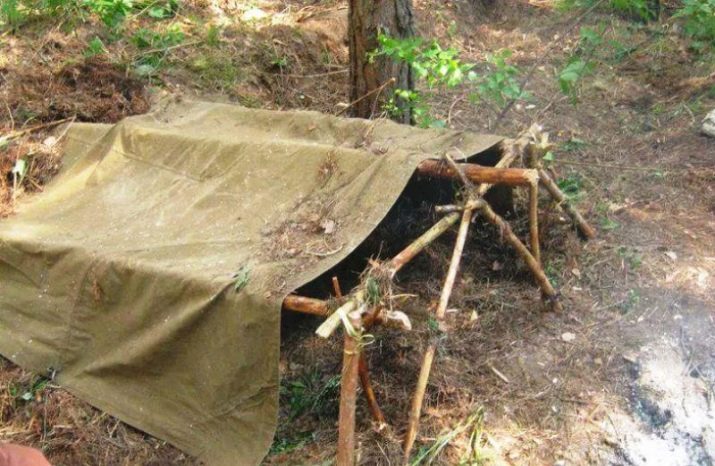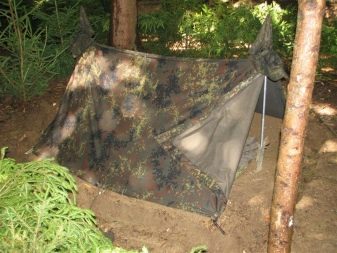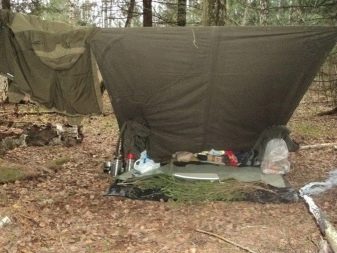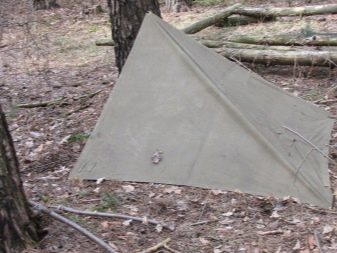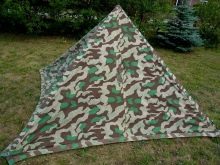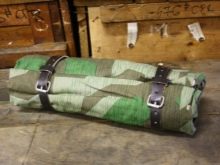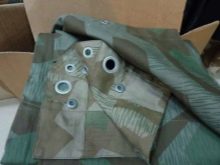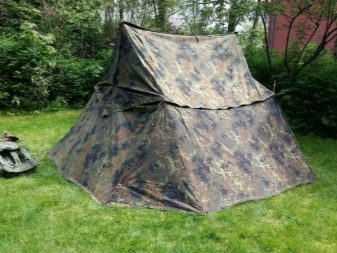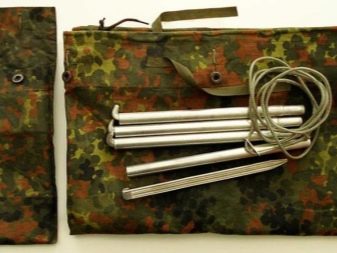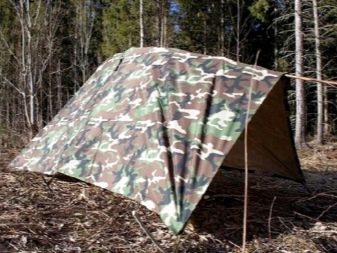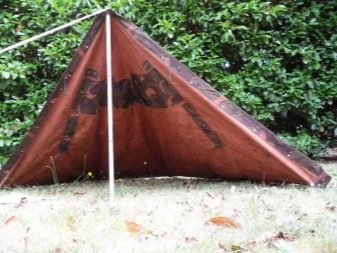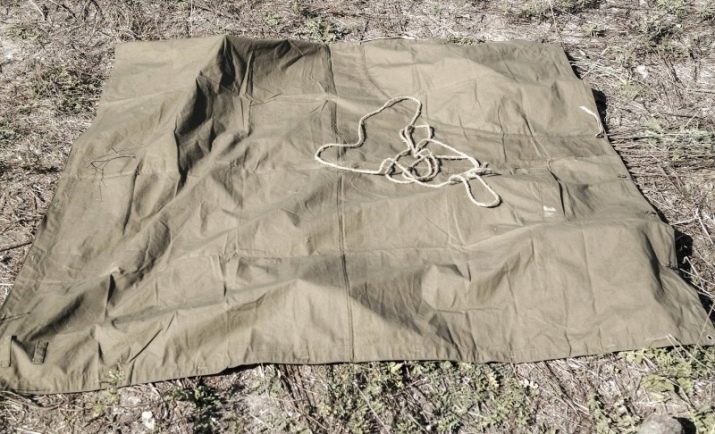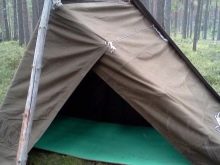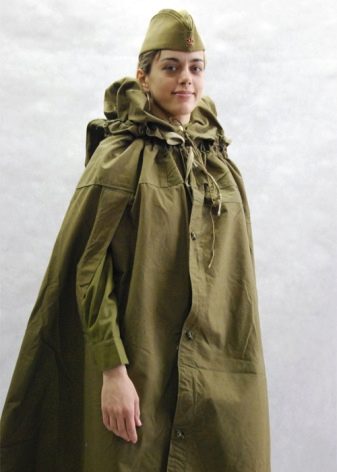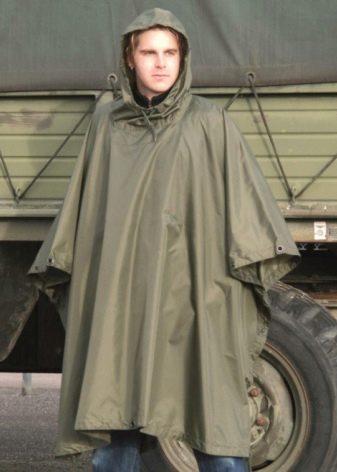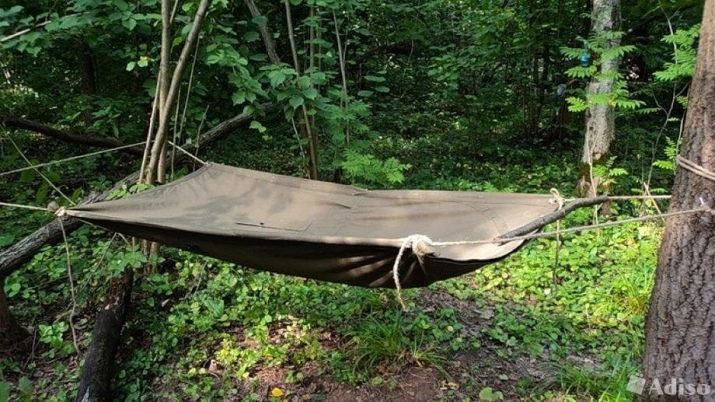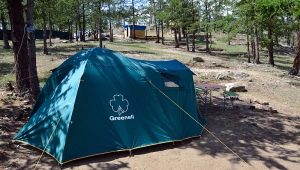Cloak-tent: features and subtleties of use
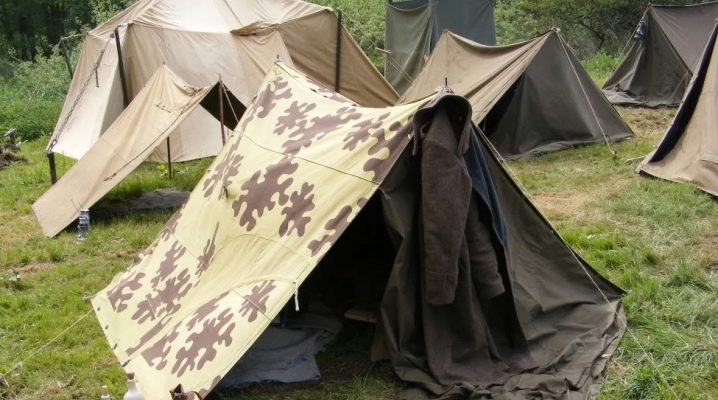
When going hunting or fishing with an overnight stay in an open area, many use sleeping bags, but this option of shelter is not suitable if you plan to stay in nature for several days. In this situation, an army cloak is recommended as a temporary shelter. They reliably protect against bad weather conditions and are easy to assemble.
What it is?
Cloak tents appeared a long time ago. This is an indispensable camping accessory made of thick fabric - canvas canvas, standard size 180 * 180 cm. When assembled, the product looks like an ordinary tent, but, unlike the latter, It has greater versatility and allows you to comfortably spend time in the wild.
The cape is a universal shelter that can always be at hand and does not require complicated installation. To collect it, it is enough to stretch the cloak and fix it on special stakes. Eyelets made of leather are provided in the product at the corners.
In addition, many models of tents have hinges or wooden buttons that allow you to simultaneously "sew" several tents for the construction of multi-seat shelter.
Additionally, ropes are sewn into the panels, thanks to which you can make a hood. Its lower corner due to the presence of buttons is easily fastened. The main feature of these devices is that there is only one slot for the hand in the models, the second hand should be passed between the buttons. Many manufacturers produce products with convenient zippers.
Unlike conventional tents, these models have the following components.
- Lace ropes. At their ends there is a winding. The diameter of the ropes usually does not exceed 5 mm.
- Racks. These devices simplify the installation of the shelter.
- Puncture of wood. For their manufacture, as a rule, birch is used, but models from other more solid woods can also be found.
- Pierced metal. They have the appearance of steel wire with a diameter of 4 mm.
In the design may be present and other equipment - it all depends on the size of the tent, as well as on the placement of how many people it is designed. If necessary, set up huge shelters in nature, for this they combine several canvases.
The device is usually worn behind the back (in the form of a traveling bag), and in the form of a cape.
Special use found the cape in the army. Its soldiers are used not only as a safe haven from adverse weather, but also as bedding for cleaning weapons and firing. The canvas of the army cloak has:
- additionally sewn a layer of fabric, it allows you to increase the water resistance of the product;
- two compartments, thanks to which you can quickly create a comfortable cape with a hood from the canvas;
- loops on bots for lacing cloths during the installation of an overnight stay;
- holes in the corners under the drains;
- fastenings for the bottom of the raincoat;
- cut for the hand.
To date, the sale has a huge range of raincoats, which is represented by various models. Before you get such a shelter, It is important to consider its size and optional equipment. The main advantages of the product include little weight (when folded, it weighs no more than 200g) and the volume is 0.5 liters.
In addition, unlike other types of tents, these models never get wet. As for the shortcomings, here we can attribute the high cost of the product.
Appearance history
The first specialized clothing, which resembles a modern pattern of the cape, appeared in the times of Peter I in the Russian army. It was used by soldiers to protect against rain and wind. Since 1761, the model has been complemented by a hood-shaped collar. In the XIX century, such an accessory began to combine several items simultaneously and became one of the main elements of equipment in many European countries. In 1884, in the Russian Empire, such accessories were included in the basic equipment of the army, they were already made of waterproof fabric.
As for the Soviet era, such capets were entrenched in the list of the main equipment of the entire army only in early 1936. They consisted of the following elements:
- canvas (size 180 * 180 cm);
- rope-lacing;
- two short pranks;
- folding rack, which consists of two rods 65 cm long.
Particularly popular were the data "shelters" during World War II, when the soldiers used them not only as a reliable protection against the weather, but also for disguise, carrying the wounded. At the same time, in the guards, the raincoat played the role of capes, and in open areas they built spacious shelters, connecting several canvases at the same time.
To date, the defense industry produces improved versions of models that are characterized by high strength and have unique camouflage properties.
Varieties
Cloak tents are considered multifunctional designs and are available in several forms, each of which has its own characteristics. Now on sale you can find the following types of products.
- Frame-leaved. This is the so-called soldier (army) cape, which can be installed from scrap materials. In this case, the frame is mounted, then it is covered with a canvas and branches with leaves.
- Frame and fabric. They differ from the above in that the canvas is stretched with the help of special stands, branches, twigs and poles.
- Fabric For sewing fabric tents used waterproof fabric (film, tarpaulin) and rubberized material. They pounce directly on the stretched rope and are fixed between the stones so that there remains a closed space at the foot.
Military demand is immensely in demand. Wehrmacht raincoatIts first model appeared in 1934 in Germany and was used by both officers and ordinary army soldiers. The German cape-tent is suitable for reliable protection against bad weather, as well as group overnight equipment.
The modern model is presented in the form of a triangular shape, around the perimeter of which there are bilateral buttons. Thanks to this feature of the many raincoat tents on the principle of "puzzle" you can assemble a roomy structure for the night. In addition, the product is produced from a tightly pressed thread, which provides a water-repellent effect.
Today, many hunters use German cape tent "Bundeswehr", its first sample appeared in 1931 and was made of cotton waterproof gabardine. Its modern model was supplemented with an original design: one side of the canvas is dark and the other is lighter.
As for the colors, it can be bronze, green or flektarn (creates an unusual visual effect, blurring the clear boundaries between colors). The size of the leaf product is 203 * 250 cm, on each side there are 12 buttons with special loops.
The weight of the tent is small, which greatly simplifies its transportation.
Review of famous trade brands, under which they produce modern cape, heading products Zeltbahn 31 (Germany) having a triangular shape and dimensions of 203 * 203 * 240 cm
How to collect?
Depending on the model range, the raincoat can have different sizes. Depending on how many people it is designed for, the following installation instruction is used.
- The rack must be set so that it rests firmly on the middle loop of the structure, placed on board the tarpaulin. In this case, the delay is made with a rope, and the four corners of the cloak are fastened to the ground for fun. If the nails are not available, the sheet is pressed down with stones.
- To collect the shelter, you need to connect two cloaks with each other, each of them will represent a separate roof slope. The open ends should be fixed with 2 ropes and half pillars, and 2 free angles should be fixed to the ground on the pins.
- Installation of an overnight stay is carried out according to the instructions, as well as for tents designed for 2 people. The only thing is that in such a construction the basis is formed by two canvases, and the third is used to cover the lateral end. Due to this, only one part of the structure remains open.
- This shelter can be assembled as completely closed, protecting the berth from the negative impact of external factors, and leave one part open. For the installation requires 2 ropes on the back and 2 - on the lacing of the end seams.
- It is a spacious structure, the roof of which consists of 2 raincoats joined together, and one end is covered with a 5th one. The second end remains open. To install such a shelter requires 3 half-racks.
As for the tent assembly methods, there are many of them. The most popular are the following options.
- The canvas is attached to the ground with stakes through the grommets at two adjacent corners. A middle stake is placed in the middle, with a height of no more than 60 cm. Those angles that remain are also tensioned and fixed with stakes. The disadvantage of this method of installation is that it is difficult to perform it alone - it is better to pull the canvas simultaneously on both sides. In addition, there is little space in this design.
- First you need to reinforce one corner with a peg, then tie a rope to the crown of the opposite corner. In this rope, you must also insert the end of the main rack, which must firmly rest on the ground in an upright position. Holding the rack in this position, a temporary fixation of the ropes to the stake driven into the ground is made. First of all, one side is stretched, then the second. This design is roomy and great for anglers and hunters.
- To install an overnight stay, you should choose a place with a flat surface, it is desirable that it be higher than the surrounding surface. The place is thoroughly cleaned of cones, branches and stones. After that, two cloaks are sewn with a rope, which is pulled through special fasteners. Then two risers are prepared with a height of up to 120 cm, they are placed in the grommets of the corners and tied with ropes, pulling the canvas. It is best to assemble such an accommodation over three people (two people will mount the risers, and the third will ensure that the construction is even).
If the installation of a raincoat tent is done for the first time, then experts advise newcomers to consider the following recommendations.
- Since a cape-tent usually consists of two connected canvases, when stitching together It is important to control that the top of the canvas is as close as possible to the ridge. Otherwise, the water from the rain will gradually accumulate at the seams and will eventually leak into the structure. This also applies to the slot for the hand - it should be placed in such a way that the water flows over the surface and not flows inside.
- Where it is planned to place the lower edges of the tent, need to clear the place of grass. This will ensure a snug fit and seal. It does not hurt to clear the area around the tent, making sure to dig a 15-cm-wide moat 10 cm deep. The excavated moat will collect water flowing from the structure and bring it to the side.
- Stay in a tent for the night is best across the visor line, while it is necessary to additionally carry out a check so that nothing touches the fabric of the tent. If there is an emphasis on the fabric from the outside, the property of reflecting water is lost, and moisture can enter inside the shelter.
- Although the cape is a great shelter from the weather, she will not be able to protect her cloisters from blood-sucking insects and animals. Therefore, before you get into nature, you need to worry about the presence of special measures of protection. This is especially true of a long overnight stay in an open area.
Application options
A raincoat is a unique invention that, in addition to the function of refuge, can perform many other roles. Most often this product is used to perform the following functions.
- Blackout. Since the raincoat-tent is made of canvas fabric of dense structure, it perfectly holds the sun's rays and provides shading. At cottages such cloaks can close windows and doorways.
- Carrying. If someone from the squadron is injured or ill, while a stretcher is not near, then a raincoat can be used. Its fabric is strong enough and can withstand the average weight of a person.
In addition, in such raincoats can be transported in a small amount of waste.
- Cover or bedding for insulation. When the temperature is low outside, the cloak-tent can not only be put on itself in the form of a warming cloak, but also make a good blanket for her to sleep. If the canvas is folded in two layers, it will provide a high level of thermal insulation.
- Awning. To create a safe shelter, it is not necessary to set the raincoat in the form of an ordinary tent. From it you can collect a small awning. To do this, just pull the raincoat between two trees and fix it with eyelets.
- Cape or marching raincoat. As a rule, a raincoat is bought to use as a comfortable cloak. In this case, it is allowed to use two options: pull out both laces, creating a hood, or just put on and tie one lace around the neck. In such a dress will not be afraid of rain or wind.
You can wear a cape both in summer and in winter.
As for the army cloak, they are characterized by high water resistance, as they are made of rubberized fabric with good waterproofing. Their purpose is unlimited:
- comfortable hammock;
- laying for cleaning of the weapon in the field and carrying out firing from the automatic machine;
- tablecloth for eating in the field;
- a device for transporting food, bread, garbage and dried leaves;
- stretchers for the transfer of wounded and sick soldiers;
- warm bedding in standard camping tents - it covers the bunks;
- light-proof material for closing windows and doors in shelled buildings and crushed barracks.
In addition, the raincoat can be used in cases where the presence of a dense and durable fabric. Most soldiers use raincoats to cover the entrances to the dugout, trenches or huts. The cape tent is also ideal as a bedding for car repairs or the creation of a heat shield near the fire.
For information on how to use a raincoat, see the following video.

